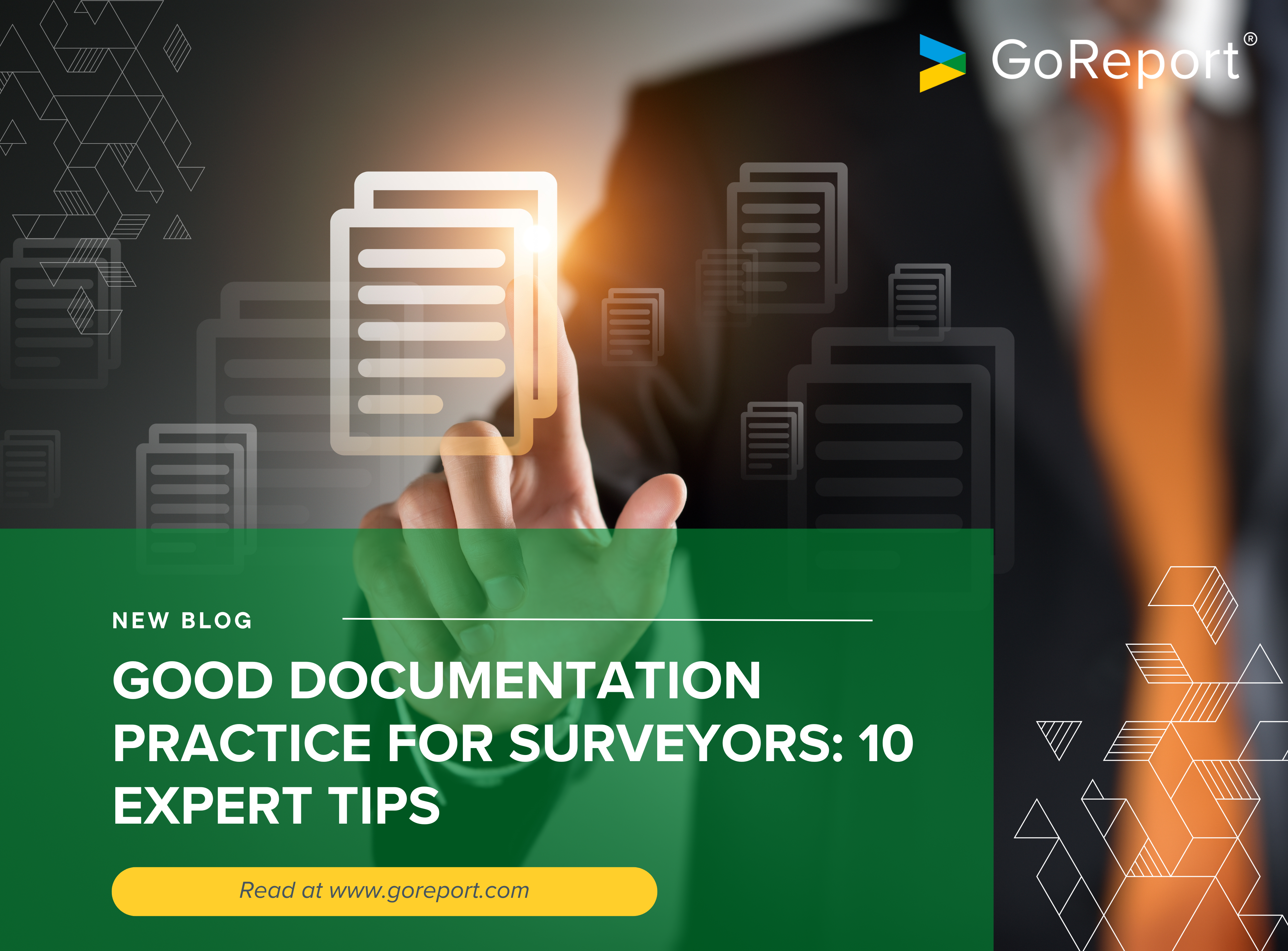Good Documentation Practice for Surveyors: 10 Expert Tips

When it comes to surveying, documentation isn’t just admin – it’s a vital part of the job. Good documentation practice ensures accuracy, protects your professional reputation, and keeps projects running smoothly. Whether you’re working on a residential valuation or a complex commercial inspection, how you record your findings can make or break the outcome.
In a profession where every observation, measurement, and recommendation can have legal or financial implications, thorough documentation is your best ally. Surveyors operate in a field where precision is paramount and communication needs to be crystal clear. Clients, contractors, legal teams, and fellow professionals rely on your reports not just to understand a property’s current condition, but to make major decisions based on your findings.
That’s why good documentation practices aren’t just about ticking boxes, they’re about protecting your professional integrity and delivering real value. Whether you’re out in the field, typing up a report back at the office, or juggling multiple site visits in a single week, the way you document your work reflects your overall quality as a surveyor.
In this article, we’ll walk you through key good documentation practices that surveyors should adopt to improve efficiency, reduce errors, and ensure clarity and consistency across every report.
What is Good Documentation Practice?
Good Documentation Practice (often abbreviated as GDP or GDocP) refers to a set of principles and standards for recording data and observations in a clear, consistent, and compliant way. For surveyors, this means:
- Capturing accurate, timely information on-site
- Maintaining professional, well-structured reports
- Ensuring your records are clear, complete, and retrievable
- Supporting transparency and accountability in your work
Whether you’re writing site notes, inputting details into a digital form, or finalising a client report, your documentation should reflect your expertise and technical due diligence.
Why Does Good Documentation Matter for Surveyors?
Why Does Good Documentation Matter for Surveyors?
Let’s be honest: documentation isn’t the most glamorous part of surveying. But without it, your technical skills can quickly be undermined. Here are some key benefits of good documentation practices:
1. Minimises Risk: Accurate records protect you in the event of disputes or claims. Good documentation helps demonstrate due diligence and professional judgement.
2. Improves Efficiency: Well-organised notes and structured templates save time and reduce rework. You can quickly reference previous work or repurpose elements for similar jobs.
3. Enhances Professional Reputation Clear, consistent reporting builds client trust. It shows attention to detail, care, and professionalism.
4. Supports Regulatory Compliance Whether you’re meeting RICS standards or health and safety requirements, documentation is often part of the audit trail.
5. Enables Better Communication Good documentation supports collaboration with colleagues, clients, and other professionals involved in a project.
10 Good Documentation Practice Tips for Surveyors
Here are our top tips to help surveyors adopt good documentation practices and streamline their reporting process.
1. Start with a Standardised Template
Using a consistent report structure not only saves time but also improves clarity. Create templates for different types of surveys (e.g., condition reports, valuations, dilapidations) with standard headers, prompts, and formatting. A good template helps ensure you don’t miss anything important.
2. Capture Observations in Real Time
It’s easy to forget small details after a long day on site. Use a mobile device to document observations as you go. Digital tools like GoReport or other surveying software allow you to input data on-site and attach photos instantly, reducing the risk of missed or inaccurate information.
3. Be Clear and Concise
Avoid jargon or overly technical language unless it’s essential. Use plain English so your reports are easily understood by clients and stakeholders. Bullet points, short paragraphs, and simple sentence structures are your friends.
4. Use Photographic Evidence Effectively
A picture really does say a thousand words. Include clear, well-labelled photographs to support your written observations. Make sure every image is dated and linked to the correct part of your report. This can be critical for both clarity and legal protection.
5. Record Even When Nothing Is Found
It may feel redundant, but noting when no defects or concerns are present demonstrates that an area was inspected. This shows diligence and can be helpful if questions arise later. For example, stating “No signs of damp or mould were observed in the loft space” adds valuable context.
6. Maintain an Audit Trail
Make sure your reports are version-controlled, time-stamped, and securely stored, leaving a good audit trail. If changes are made, document who made them and why. This kind of transparency supports accountability and is crucial in disputes or legal proceedings.
7. Keep It Objective
Stick to facts and avoid assumptions. Instead of saying, “This wall appears poorly constructed,” opt for, “The wall displays irregular mortar joints and visible movement cracks.” Let the evidence speak for itself.
8. Don’t Rely Solely on Memory
Even seasoned surveyors can forget specifics if they’re not recorded straight away. Build the habit of documenting as soon as possible, ideally on-site. Voice notes or mobile dictation can be helpful if typing isn’t practical at the time.
9. Review and Reflect Before Finalising
Take a few minutes to step back and review your documentation before submitting a report. Ask yourself:
- Have I missed anything?
- Is it easy to understand?
- Are there clear actions or outcomes?
This final review often catches small errors or unclear phrasing that could cause confusion later.
10. Use Tools That Fit Your Workflow
Choose documentation tools that are purpose-built for surveyors and seamlessly integrate into your day-to-day process. Platforms like GoReport are specifically designed to support accurate site capture, streamlined reporting, and professional presentation, saving time while enhancing quality. Instead of testing generic options, opt for trusted digital solutions tailored to your profession.
Good Documentation Practice Examples
Sometimes the best way to understand what good documentation looks like is to see it in action. Below are several practical examples that highlight the difference between vague or insufficient records and clear, professional documentation. These scenarios will help you spot areas for improvement in your own reporting and provide a framework to follow on your next survey.
Example 1: Poor vs Good Observation Recording
Poor: “Damp wall in kitchen. Needs looking at.”
Good: “Signs of rising damp noted on the northern kitchen wall. Plaster visibly bubbled and moisture reading at skirting board measured 20%. Recommend further investigation by a damp specialist.”
Example 2: Clear Use of Photos
Attach images with captions like: “Cracking above front door lintel – possibly thermal movement – photo taken 10/04/25 at 11:12 AM.”
Example 3: Structured Reporting
Using headers such as:
- Roof Structure
- Dampness
- External Walls
- Services
- Recommendations
This makes your report easier to read and reference.
Example 4: Logging Absence of Defects
Example: “No evidence of subsidence was observed around the external perimeter. All structural elements appeared stable with no signs of cracking or differential movement.”
Including these kinds of entries demonstrates diligence and reinforces that the inspection was comprehensive.
Example 5: Supporting Statements with Quantitative Data
Instead of simply saying a window doesn’t close properly, consider: “Rear ground floor window does not close flush; a 15mm gap remains between sash and frame on closure. Recommend joinery inspection and repair.”
How Digital Data Capture Supports Good Documentation
Technology can play a major role in helping surveyors maintain good documentation practices — without adding hours to the workday. Digital data capture tools are designed to streamline the entire process from site to report.
1. Capture Data On-Site, In Real Time: Surveyors can log photos, notes, and measurements directly into a digital device, removing the need to transcribe handwritten notes later. This reduces transcription errors and saves time.
2. Automatic Time and Location Stamping: Digital platforms often include automatic timestamps and geo-tagging, which strengthens your audit trail and provides verifiable context for your observations.
3. Structured Templates and Smart Forms: These tools allow you to build out standardised report templates that guide consistent data entry. Dropdowns, checkboxes, and prompts help ensure no detail is overlooked.
4. Easier Collaboration and Review: Reports can be shared instantly with colleagues or clients, and updates are synchronised across devices. This is especially helpful on large projects with multiple contributors.
5. Secure Storage and Version Control Digital systems typically offer cloud backup and secure access control, ensuring that reports are saved, versioned, and protected from loss or accidental deletion.
By incorporating digital tools into your workflow, you can increase the quality and consistency of your documentation while making the reporting process faster and more intuitive.
Good documentation practice isn’t about perfection – it’s about consistency, clarity, and care. By building these habits into your surveying routine, you’ll not only produce better reports but also protect yourself professionally and deliver more value to clients.
Whether you’re a seasoned chartered surveyor or just starting out, there’s always room to improve your documentation game. Start with a few changes and build from there.
Explore digital tools designed for surveyors, like GoReport, that make site capture and reporting faster, easier, and more consistent. Get in touch for your free trial.







